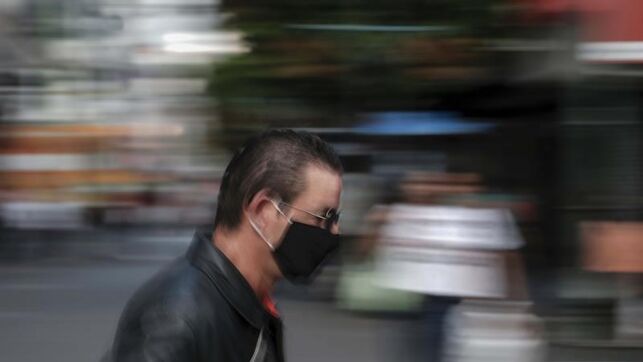Costa Rica is keeping covid-19 under control, say World Economic Forum
By the A.M. Costa Rica staff and wire services
The first confirmed case of the covid-19 coronavirus in Latin America was diagnosed in Costa Rica, a nation of 5 million people that have just over one doctor per thousand people, said the World Economic Forum, WEF, in its report.
According to the organization, Costa Rica has the recipe for a health disaster that has turned into a relative success story during the pandemic.
“By May 6, Costa Rica had reported 755 cases and six deaths,” said WEF in its statement. “It’s a record on a par with that of New Zealand, widely regarded as a paradigm for effectively managing the virus. New Zealand has a similar-sized population and had reported 1,488 cases and 21 deaths by 6 May.”

However, on May 12, authorities reported only 277 active patients infected with the covid-19 and 7 deaths.
The number of people recovering from coronavirus in Costa Rica has recently outpaced the number of new cases. By May 4, the total number of people who had recovered was greater than the number of active cases.
The key to success is acting quickly, they said.
How has Costa Rica been so successful in containing the virus? Costa Rican tech entrepreneur José Cayasso, whose business is based in New York, has no doubt about the reason for his nation’s resilience.
“The key here is how quickly the government responded and how seriously they took the situation from the get-go,” he said in a YouTube video. “Few countries, even success stories like South Korea, have been as successful as Costa Rica in slowing the curve.”
Cayasso, who left his office in the U.S. to sit out the pandemic in his home country, said:
“Seeing how the situation evolved in the first few weeks, seeing how both of these governments responded, I would not choose anywhere else in the world to be other than Costa Rica.”
A sentiment shared by citizens and government officials too.
“We’ve had a very controlled transmission,” stated Daniel Salas, Ministry of Health in a report. “That’s in large part to the actions taken at the appropriate moment, but also due to the very favorable response from a population that understands the challenge we’re facing.”
Costa Rica banned mass gatherings on March 9. By March 16, the government declared a state of emergency, under which people were told to work from home, and enforced immediate closures of schools and all non-essential businesses. A few days later, on March 19, the country closed its borders.
Unlike other countries in Latin America, Costa Rica has universal healthcare, which it spends a higher proportion of gross domestic product, GDP, than the Organization for Economic Cooperation and Development, OECD, average.
The OECD praises the country for its system that delivers higher life expectancy than many other OECD nations.
Costa Rica has carried out more than 17,000 coronavirus tests. With the number of new cases decreasing, the government decided to partially lift the lock down.
Starting May 1, theaters, gyms and exercise centers have been allowed to reopen, but customers must keep two meters apart at all times. Sporting venues are only allowed to use a quarter of their seating capacity.
Beauticians and hairdressers are also allowed to resume working inside their salons on the condition that they only have half as many customers as their salons can accommodate. Even auto shops are limited in the number of cars they can service.
No business should function at capacity.
“We have had a relative and fragile success, but we cannot let our guard down,” said President Carlos Alvarado in a Reuters article.
Restrictions on driving will continue as a measure to prevent people from spreading the virus. Driving at night is banned and drivers may only drive on certain days if their license plate ends in a particular number.
Borders will remain closed until June 15. Border closures are a blow to the nation’s normally thriving tourism industry, which contributes $1.7 billion to the economy. Overall, the lockdown is forecast to reduce the nation’s GDP by almost 4% this year.
According to the Forum, Costa Rica’s success holding the virus at bay is in contrast to neighboring Panama, which has a smaller population but had reported 7,523 cases and 210 deaths by May 6. On the same day, the region’s largest country, Mexico with close to 129 million people, had reported 26,025 cases and 2,507 deaths.
A video on Costa Rica’s success to slow down the spread of covid-19 made by the World Economic Forum can be seen on their YouTube page.



